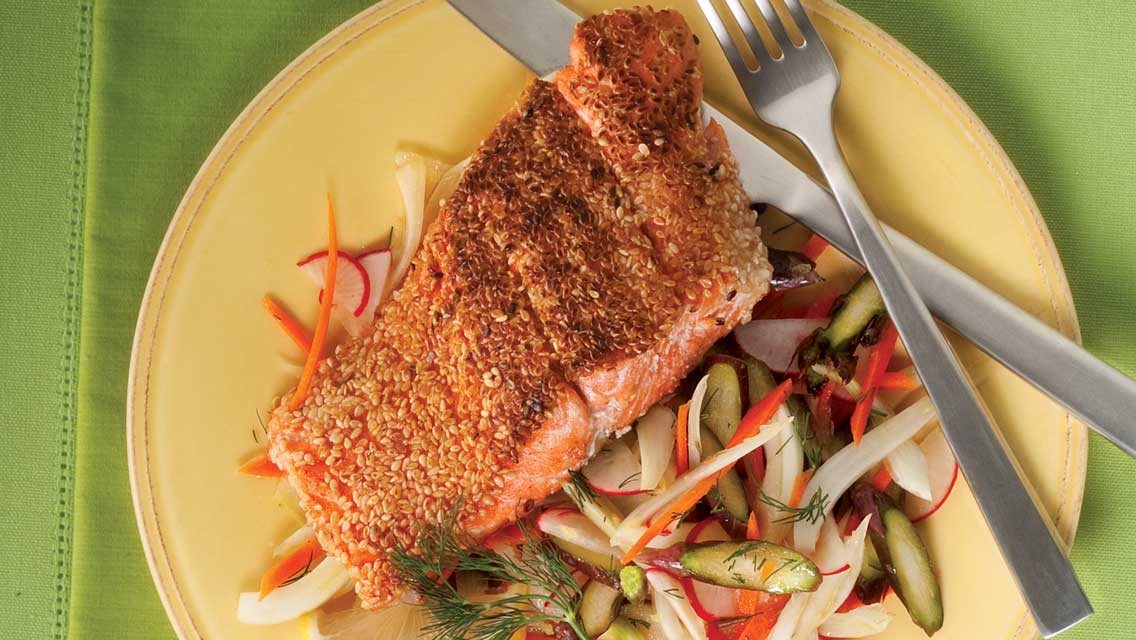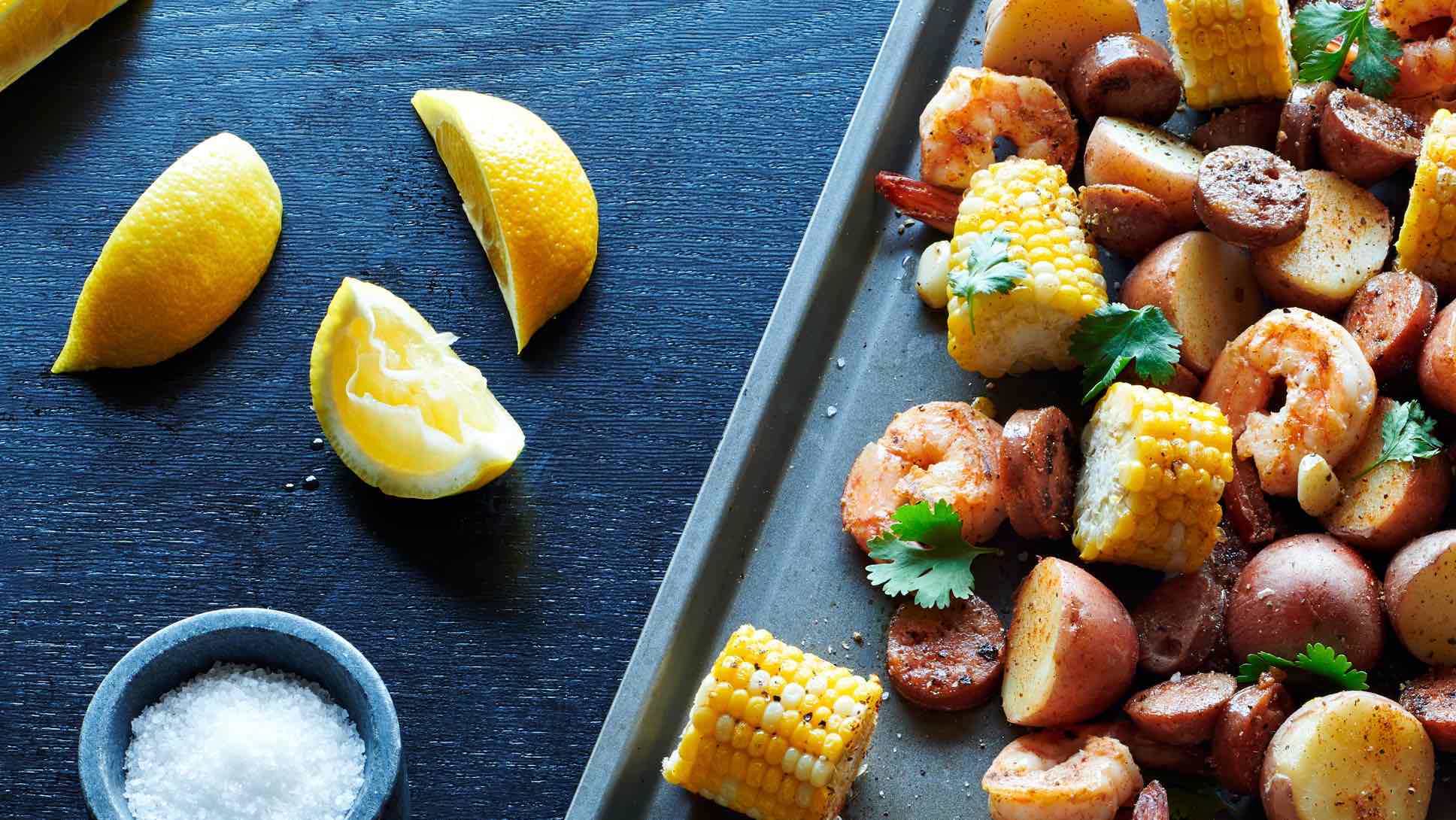Unless you were raised by seagulls, chances are you remember your first experience with a raw oyster vividly. Quite vividly. Call it the spit-or-swoon response. Me, I’m a swooner: The briny, squishy, oceanic and endlessly evocative and provocative taste of a raw oyster makes me feel giddy and lucky in a way only a very few other treats do. In fact, only chocolate truffles, foie gras, and the very best cheeses come to mind as possible rivals.
But oysters have one benefit that those other rich treats don’t: They’re just about the healthiest thing you’ll ever see on a white tablecloth in a fancy restaurant.
Oysters aren’t just delicious, they’re low calorie, have no saturated fats, are low in cholesterol, and are rich in vitamins A, B1, B2, C, and D, as well as in minerals calcium, iodine, magnesium, iron, potassium, copper, sodium, phosphorous, manganese, sulfur, and zinc. (Some say it’s the zinc that gives them aphrodisiac properties.) They’re also full of good-for-you omega-3 fatty acids.
So, just how low in calories are they? Pretty darn low: Various nutrition guides will range from 5–20 calories per oyster, which isn’t surprising, since oysters come in a vast range of sizes. Japanese Kumamoto oysters might only be the size of a quarter, but their sweet, buttery presence in the mouth leaves an indelible impression. Meanwhile, chubby Belon oysters (named for the area near the mouth of France’s Loire River where they are traditionally harvested) might be the size of an egg.
If you are calorie counting (but really, why bother?), you can figure that a dozen oysters will have between 120 and 200 calories – fewer than a bag of microwave popcorn, and infinitely better beside a glass of champagne. A flute of bubbly should only run a hundred calories itself. An opulent treat that’s guilt free? Ah, now that’s living.
It isn’t necessarily a new way of living, though. Back in the pre-pollution, pre-overfished-waters days of the first World War, Americans might have eaten dozens of oysters at a sitting. It’s hard to believe (with current prices running from a dollar to three dollars per oyster) that oysters were once as cheap and plentiful as potato chips. Back in the 1850s, oysters were one of the cheapest sources of protein available. Recipes for oyster stews called for quarts and quarts of fresh oysters. Something called the “Canal Street Plan,” named for a street in New York City, proliferated; for 6 cents, participants got all the oysters they could eat. In fact, in 1859 a British traveler explained Americans to his countrymen like this: “The rich consume oysters and Champagne, the poorer classes consume oysters and lager bier, and that is one of the principle social differences between the two sections of the community.”
The more things change, the more they stay the same. We might not have 6-cent, all-you-can-eat oyster feasts anymore, but beer and champagne remain the beverages of choice beside a plate of oysters. The coolness of a crisp beverage plays good counterpoint to the complicated flavors of the oyster. And oyster flavors can get pretty darn complicated.
Most oyster lovers can talk authoritatively on the differences between Northeast oysters, like Bluepoints and Wellfleets, which are made sweet and subtle by their cool Atlantic beds; Southeast oysters from the Texas Gulf or Louisiana, which are generally found to be richer, gamier, and hosting a more buttery flavor thanks to their warm, rich waters; and West Coast oysters, from Puget Sound or Mad River, with their assertive, meaty, fruity qualities gained from their choppy, fertile waters.
Nowadays though, oyster-bar menus are full of exciting new varieties, like Hamma Hamma oysters from Washington state, or Watch Hill oysters from Winnapaug Pond in Rhode Island, and ever more specific location names. It used to be that oysters were identified as simply coming from Prince Edward Island, while today they might be described as coming from Prince Edward Island’s Pickle Point in Covehead Bay.
Just as wine-lovers delight in finessing the difference in taste between pinot noir grown in Oregon versus that grown in California, oyster fans rejoice in parsing out the difference between oysters grown in various inlets and bays, attributing subtle qualities of strawberry, copper, limestone, citrus, or smoke. High-end seafood chain McCormick & Schmick’s now boasts that they might sell oysters that originate from more than a hundred different locations through the course of a year, giving people who swoon over the things an endless variety to explore.
As for the oyster’s aphrodisiac qualities—who really knows for sure? Legendary Italian lover Casanova was said to eat 60 oysters a day, and it apparently worked for him. Some scientists suspect the oyster’s amorous legend derives from all those trace minerals, and especially the zinc. Cynics attribute the magic to the sensual physicality of slurping the critters from their rough shells, as well as the accompanying effects of champagne. Whether cynic or believer, spitter or swooner, it only takes the slightest bit of common sense to notice that out of the entire panoply of high-class appetizers—from foie gras to tartlets to butter-fried crab-cakes—raw oysters are just about the only one that won’t send you from the table weighed down with fat and feeling logy. And isn’t that reason enough to order another dozen and pop another cork?
Saucy!
Hardcore oyster lovers don’t want anything between them and their oysters but a quick splash of lemon, hot sauce, mignonette or something equally bright and clear. These uncomplicated sauces not only provide a lively contrast to the sweet and briny qualities of the oyster, their acid content also kills off any bacteria that may be developing on the oyster’s surface.
But they won’t kill off any germs brewing inside the oyster. So remember, if you’re planning a do-it-yourself oyster feast, only buy oysters from a reputable fishmonger with high turnover, and only eat those oysters that hold themselves tightly closed—the sign of a healthy, happy mollusk.
Keep your oysters well chilled. When ready to eat, rinse and scrub them well under icy water, crack them open, and serve them face up in their shells on a bed of crushed ice. Garnish the plate with a bit of greenery and one or more of these fresh condiments:
Fresh Lemon
Cut the pith away from the center of your lemon wedges, and squeeze away. An accompanying dusting of fresh ground pepper is traditional.
Mignonette Sauch
- 3 tablespoons fresh ground crushed peppercorns
- 3 tablespoons finely minced shallots
- 2/3 cup good quality white wine vinegar
Combine all ingredients, and let stand in a glass or ceramic bowl at room temperature overnight. Mignonette sauce can be made a week in advance.
Note: Do not use the cheapest grocery store wine vinegar, for the stuff can be villainously salty. In case of emergency, substitute a mixture of half apple-cider vinegar and half white wine. Another note: Substitute white peppercorns and red wine vinegar for variety.
Hot Sauce
McIllhenny Tabasco hot sauce is a classic choice, though it must be noted that oysters and hot sauce go far better with beer than with champagne – try Dixiebeer for the real Southern experience.
Red Bell Pepper and Balsalmic Vinegar Sauce
- 3 tablespoons finely diced red bell pepper
- 1 tablespoon scallion, white part only, finely chopped
- 1/4 cup quality balsamic vinegar
- 1/8 teaspoon ground white pepper
- Cracked pink peppercorns to taste
In a small bowl, combine all, let sit at room temperature for at least two hours before serving. Can be made 24 hours in advance, and refrigerated.
This article has been updated. It was originally as “Happiness on the Half Shell” in the January/February 2002 issue of Experience LIfe.





This Post Has 0 Comments